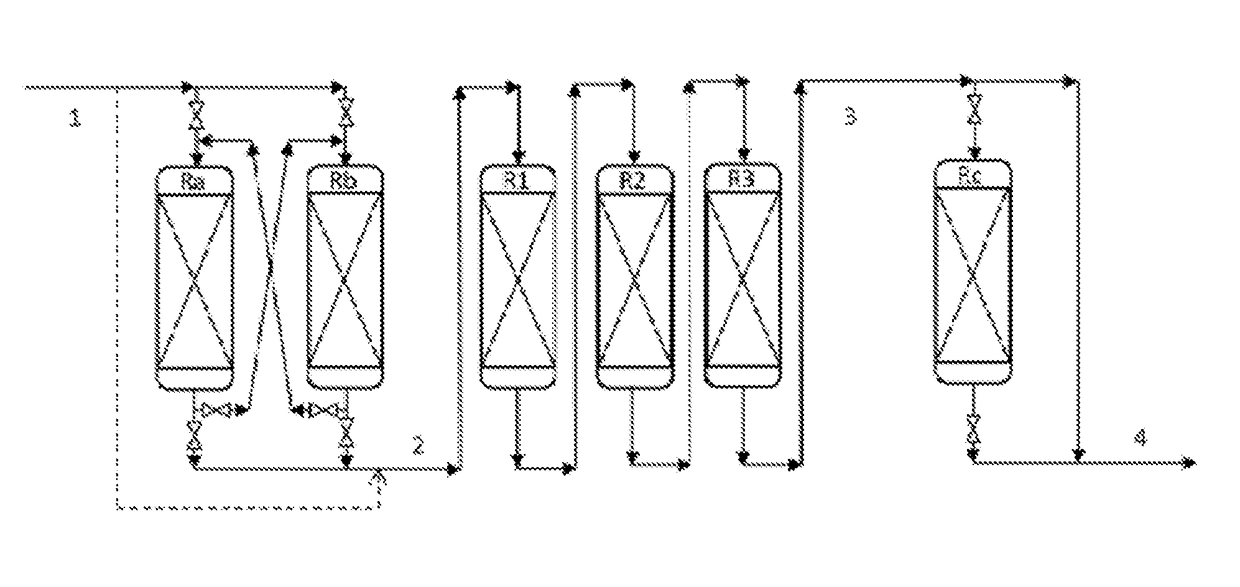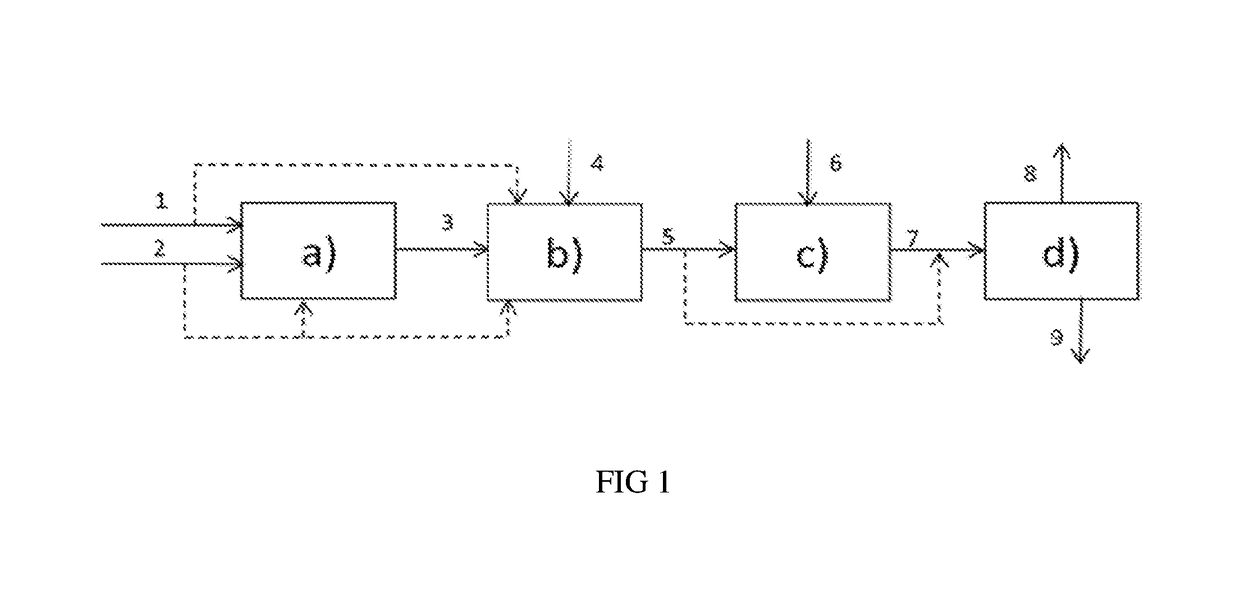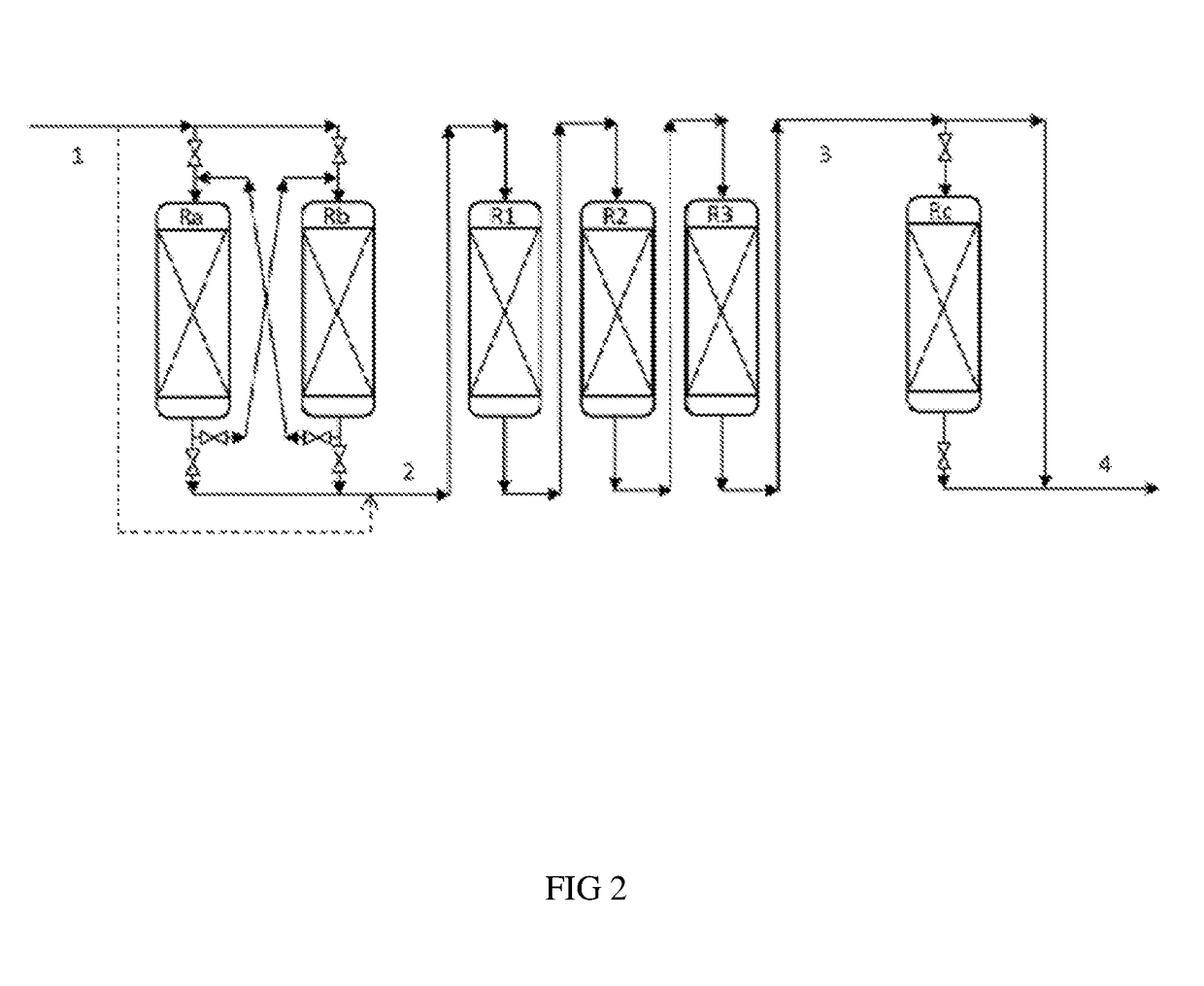Conversion process comprising at least one step for fixed bed hydrotreatment and a step for hydrocracking in by-passable reactors
a conversion process and hydrotreatment technology, applied in the field of refining and to the conversion of heavy hydrocarbon fractions, can solve the problem of degrading the quality of fuel oil by insufficient sediments, and achieve the effect of reducing the pressure drop of the reaction section
- Summary
- Abstract
- Description
- Claims
- Application Information
AI Technical Summary
Benefits of technology
Problems solved by technology
Method used
Image
Examples
example
Example 1 (not in Accordance with the Invention)
[0092]The feed was a mixture of atmospheric residues (AR) of Middle Eastern origin. This mixture was characterized by a large quantity of metals (100 ppm by weight) and sulphur (4.0% by weight) as well as 7% of [370-].
[0093]The hydrotreatment process comprised the use of three fixed bed reactors (R1, R2 and R3) with a downflow of liquid within which the steps termed hydrodemetallization (HDM) and hydrotreatment (HDT) were carried out.
[0094]The effluent obtained from these two steps was flash separated in order to obtain a liquid fraction and a gaseous fraction containing gases, in particular H2, H2S, NH3 and C1-C4 hydrocarbons. The liquid fraction was then stripped in a column then fractionated in an atmospheric column then a vacuum column into several cuts (IP-350° C., 350-520° C. and 520° C.+).
[0095]The reactor R1 was charged with hydrodemetallization catalyst and the reactors R2, R3 with hydrotreatment catalyst. The process was carr...
example 2 (
in Accordance with the Invention)
[0100]In this example, the process in accordance with the invention was operated with the same feed, the same catalysts and under the same operating conditions for the reactor R1. Reactor R2 was operated under the same operating conditions, but its HSV was higher.
[0101]The process in accordance with the invention involved the use of a novel by-passable hydrocracking reactor denoted Rc, replacing the reactor R3 which appeared in the hydrotreatment section (HDT) of the prior art. This hydrocracking step was carried out at high temperature downstream of the hydrodemetallization and fixed bed hydrotreatment steps which were carried out in the reactors R1 and R2.
[0102]Table 2 below provides an example of the operation of the by-passable reactor Rc.
TABLE 2Operations around the by-passable reactorin accordance with the inventionFixed bed reactorsBy-passable hydrocracking reactorSequencesHDM / TransitionHDTOff lineHCK1R1R2—Rc2R1R2Rc—
[0103]During sequence 1, th...
PUM
 Login to View More
Login to View More Abstract
Description
Claims
Application Information
 Login to View More
Login to View More - R&D
- Intellectual Property
- Life Sciences
- Materials
- Tech Scout
- Unparalleled Data Quality
- Higher Quality Content
- 60% Fewer Hallucinations
Browse by: Latest US Patents, China's latest patents, Technical Efficacy Thesaurus, Application Domain, Technology Topic, Popular Technical Reports.
© 2025 PatSnap. All rights reserved.Legal|Privacy policy|Modern Slavery Act Transparency Statement|Sitemap|About US| Contact US: help@patsnap.com



